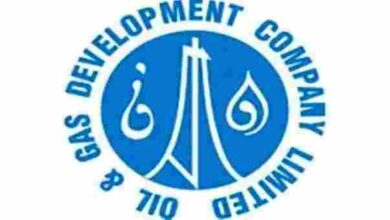New generation of lever hoists offer high levels of safety and performance
William Hackett has launched SSL5, which incorporates its patented quad pawl (QP) mechanism.
“It’s a piece of engineering innovation that will transform safety levels globally when lifting offshore and in subsea operations using lever hoists,” Ben Burgess, Director at William Hackett, said. “We’ve designed this hoist to provide the highest level of safety, with increased levels of redundancy and resilience to failure. Its QP offset load bearing mechanism is the best in the market, and it offers enhanced operating performance compared to twin pawl products.”
The patented QP mechanism synchronizes a set of four pawls which constantly work together to minimize the time and distance travelled to the next point of engagement.
“It overcomes jamming and unintended malfunctions that can be experienced when using other simpler first-generation products,” Mr Burgess added. “This helps to minimize project downtime or costly delays to work scopes, providing total peace of mind for operators and marine contractors.”
SSL5 also overcomes the current industry-norm of single use immersion hoists.
“Big savings are achievable with this device,” Mr Burgess said. “The capability of the SSL5 to be immersed multiple times means it can significantly reduce capital investment on new hoists per mobilization by up to 80%.”
Customer controlled field trials reveal William Hackett’s SSL5 hoists were immersed 12 times over a 60-day period. It successfully passed a rigorous multi-immersion test, inspection and operation program, which was witnessed and verified by DNV GL.
“We are helping operators to make better choices and overcome purchasing large quantities of single-use hoists,” Mr Burgess added. “The historic paradigm of single-use hoists, which are often used once and then discarded, is very expensive and not good practice from an environmental perspective. The use of single immersion hoists isn’t sustainable for today’s industry and is representative of an out-dated practice. Customer decision-making criteria is beginning to reflect this.”
The SSL5 innovation is the result of William Hackett’s long-term investment strategy.
“We’ve worked hard to create a technically-superior lever hoist that saves our customers money, delivers improved cost efficiencies and consistently performs on safety for those valuable payloads,” Mr Burgess said.
Safe and continual performance of lifting equipment crucially depends on minimizing risk through improved resilience to failure.
“We are all too aware of industry incidents that are reported from across the world,” Mr Burgess highlighted. “For us, it is important to continually innovate and develop our lifting solutions to mitigate potential areas of failure.”
An increasing number of employers and stakeholders in the Middle East, are recognizing that lifting is a safety-critical activity. The International Labour Organization (ILO) recently unveiled estimates highlighting the root cause of 59% of lifting incidents being attributed to a human factor, with 33.3% being caused by equipment failure.
“Our investment and focus on safety are strictly aligned with organizations such as the Institution of Occupational Safety and Health (IOSH), and the Abu Dhabi Quality and Conformity Council (QCC) that support safety standards for lifting equipment being used in the Emirate,” Mr Burgess noted.
William Hackett forecast significant demand for their latest range of hoists in upcoming infrastructure projects, with industry revenue expected to grow at an annual rate of 2.5% to reach £3.6 billion later this year, reports IBISWorld.
“The UAE is a key part of our strategic focus where it is not so reliant on oil, which makes up around 30% of its economy, but more reliant on foreign investment to create infrastructure,” said Mr Burgess. “There are challenges for the economy, but projects such as UAE’s Expo 2020 is a big initiative, so we believe there’s a large part to play in supporting the region to build their infrastructure safely and securely with our hoist. We are in a very good market position with this latest innovation and are delighted to be making the official launch of the SSL5 QP lever hoist in the UAE at the Abu Dhabi International Petroleum Exhibition & Conference (ADIPEC).”




